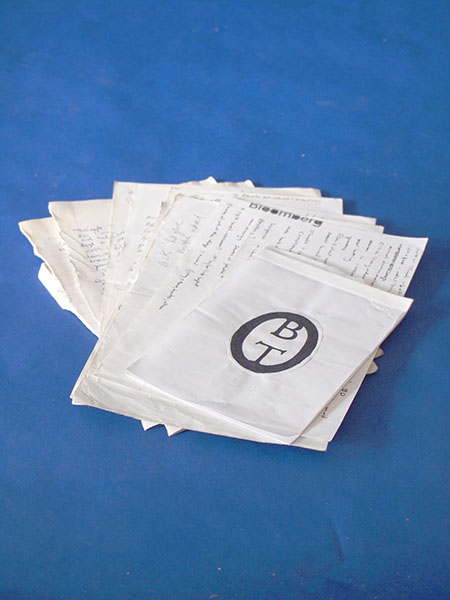![]() body | color | collections | commodity | cube | document | fabric | fetish | gender | glass | home | identity | living | machine | metal | minimal | mobility | narrative | olfactory | organic |
body | color | collections | commodity | cube | document | fabric | fetish | gender | glass | home | identity | living | machine | metal | minimal | mobility | narrative | olfactory | organic |
![]() pain | paper | plastic | plugs | power | protective | rectangular | ritual | round | sound | souvenir | spiritual | style | text-based | time | tool | touch | uniform | value | visual | warm | wood
pain | paper | plastic | plugs | power | protective | rectangular | ritual | round | sound | souvenir | spiritual | style | text-based | time | tool | touch | uniform | value | visual | warm | wood
| Paper: Project Notes | |||
Narrative: Project notes. Some of these notes are from a project called Barn on Thames, completed in Oxfordshire UK iniside a barn. The points of most ballpoint pens are made out of brass, which is an alloy of copper and zinc. Oleic acid, castor oil, or a sulfonamide plasticizer are also used. The markers bodies, caps, and plugs are formed from plastic resin. The marker reservoirs are formed from polyester. Powder and water are used to form the felt writing tip. In addition, markers require ink, and the pigments and synthetic substances used to make it. To make the body of the marker, plastic resin is injection-molded into a marker body. Injection molding involves heating plastic resin, into a molten state and forcing (injecting) it into a mold of the desired shape, then allowing it to cool and harden. Marker caps and plugs are formed in the same manner as the barrel. The nib, or tip, of the marker is made from powder mixed with water, molded, and baked into its pointed or flat form. Using one machine for all the following functions, an assembler then places a polyester cylinder inside the marker barrel to form a reservoir for the ink, fills the reservoir with ink, and inserts the nib at the bottom and the cap at the top. The markers are then placed into color assortment and packaged for retail marketing. Recycled paper pulp is made by mixing used paper with water. Rotating fins in the pulper reduce the paper to individual fibers, producing a paper slurry. That pulp is then washed and refined. At that stage, contaminants like small pieces of glass, staples, plastic, and any other non-fiber materials that were mixed in with paper are removed. About 2% of the recovered fiber is lost during the papermaking process and becomes compost, landfill cover, or feedstock for aerobic or anaerobic water treatment systems. Clean paper slurry is then moved through the paper machine on a series of screens. As the pulp travels, water drains away from the slurry. The remaining paper fibers are pressed with rollers and dried to form large sheets of paper. Computerized sensors are made in China monitor each stage of the process. As the paper exits the machine, it is either stacked in large sheets or wound into large rolls. The recycled paper is then sent to a converting facility where it is transformed into a box, core or tube, fiber can, folding carton, or other consumer or industrial product.
|
 |
||
![]()
